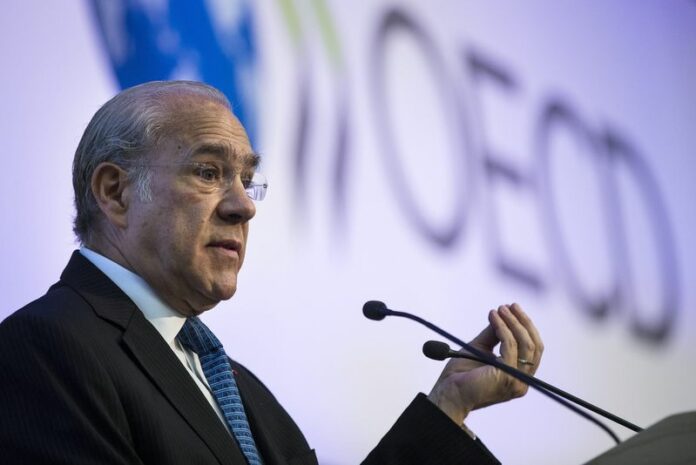
A file photo of the Organisation for Economic Co-operation and Development (OECD) Secretary General Jose Angel Gurria seen giving a speech at the OECD headquarter in Paris, France, 26 June 2014. China's economy could still double between 2010 and 2020 despite a slowing economy, but educational inequalities could impede necessary economic reforms. EPA/ETIENNE LAURENT
BEIJING (DPA) — China's economy could still double between 2010 and 2020 despite a slowing economy, but educational inequalities could impede necessary economic reforms, the Organization for Economic Cooperation and Development (OECD) said Friday.
"Education inequalities are stark, stemming first and foremost from the urban-rural divide and secondly from social stratification," the consortium of Western economies said in a report.
China's development will increasingly depend on the quality of its human capital as the share of the working-age population falls and people continue to leave rural areas for higher-productivity jobs in cities, it said.
But, "access to good education is not equally available for all," the OECD's economic survey of China said.
Little is being spent on vocational training at the secondary and tertiary level, and salaries of primary and middle-school teachers are lower than in most other professions, the report found.
China should boost public spending on education, including increased teacher compensation, establishing a country-wide vocational education system, enhancing career guidance, and opening up public schools to all children of migrant workers, the report said.
China should also promote greater research autonomy and stronger intellectual property rights to attract and retain world-class researchers, according to the report.
The OECD did not mention a January ban on the use by universities of imported textbooks seen as promoting Western values, a move which had sparked concerns about academic freedom in the country.
In November the OECD projected that China and India would retain the highest rates of GDP growth in 2015 at 7.1 per cent and 6.4 per cent, respectively.
But on Friday it trimmed the projection for China to 7 per cent growth in 2015 and 6.9 per cent for 2016.
Any sharper slowdown would have global spillovers, it said.
"Unwavering commitment" to structural reforms was needed to make the shift away from the current reliance on investment and manufacturing towards consumption and services, it said.
Investment might slow down more than foreseen if stimulus measures fail to counterbalance the effects of the cooling property market, capacity adjustments in some heavy industry sectors, and the leadership's ongoing anti-corruption campaign, which has lowered demand for some luxury goods.
The slowdown of the Chinese economy has already contributed to the end of the so-called "commodity super cycle" internationally, the report said.
A shift away from heavy industry in China has meant lower imports of iron ore, coking coal for steel production, manganese ore and aluminium ore, affecting a range of countries as diverse as Australia, Brazil, Gabon, Myanmar and South Africa, the report said.
It mentioned some positive initiatives by the government.
An economic work plan endorsed by the National People's Congress this month reduced by half the number of fields where foreign investment is restricted.
The plan also pushes forward with reforms to the structure and performance of state-owned enterprises, which dominate the telecoms, shipping, securities, banking and oil and gas sectors.
China's economy grew last year by 7.4 per cent, the weakest growth in 24 years.











































